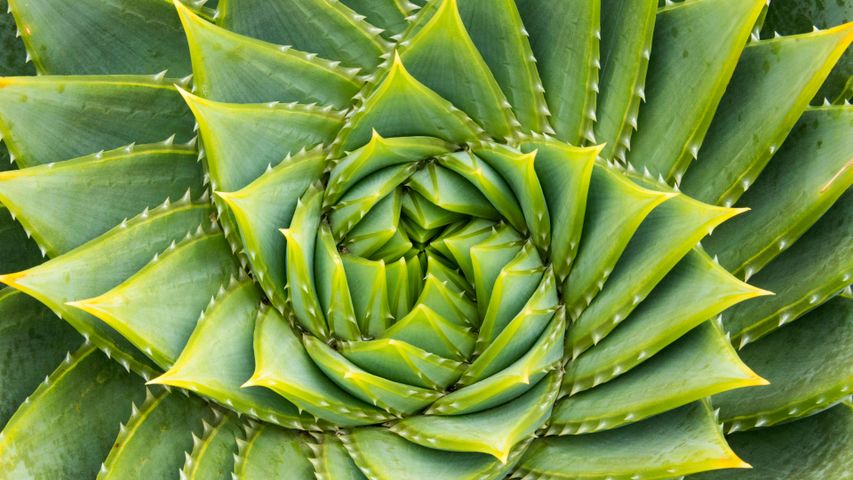An agave plant for Fibonacci Day
© Moab Republic/Shutterstoc
1, 1, 2, 3: It's Fibonacci Day!
Today's date (written US-style) is 11/23, or 1, 1, 2, 3 - a Fibonacci sequence of numbers. The leaves on the Queen Victoria agave in today's image also express the sequence as they spiral out from the centre. It can be found throughout nature and art, from the structure of shells to the composition of Renaissance paintings. This unique set of numbers was introduced to Europe in 1202 by the Italian mathematician Leonardo of Pisa (posthumously named Fibonacci) in his revolutionary work the 'Liber Abaci'. The book showed how switching to the Hindu-Arabic numeral system or 'Modus Indorum’ – 0 1 2 3 4 5 6 7 8 9 - could simplify calculations and trade, at a time when most of Europe was using Roman numerals.
Fibonacci also described various mathematical problems including a hypothetical experiment about how fast rabbits could breed in ideal circumstances, which resulted in a Fibonacci sequence. It is determined by adding the previous two numbers together to find the next number: 1, 1, 2, 3, 5, 8, 13, 21, 34, etc. Since then, mathematicians, scientists and artists have been studying and applying the numbers. While Fibonacci gets the credit, it is thought he wasn't the first to discover the sequence - Indian mathematicians had been aware of and written about it for more than a century beforehand.
Related Images
Bing Today Images






 Maritime forest in Cumberland Island National Seashore, Georgia
Maritime forest in Cumberland Island National Seashore, Georgia
 Water lilies at the surface of Cenote Nicte-Ha, Tulum, Mexico
Water lilies at the surface of Cenote Nicte-Ha, Tulum, Mexico
 Madame Sherri Forest and the remnant of an old castle, New Hampshire, USA
Madame Sherri Forest and the remnant of an old castle, New Hampshire, USA
 Tree frog on leaf
Tree frog on leaf
 Birch trees in autumn, Drammen, Norway
Birch trees in autumn, Drammen, Norway
 Fall colours in Shenandoah National Park, Virginia
Fall colours in Shenandoah National Park, Virginia
 Sunset in Glenariff Forest Park, County Antrim, Ireland
Sunset in Glenariff Forest Park, County Antrim, Ireland